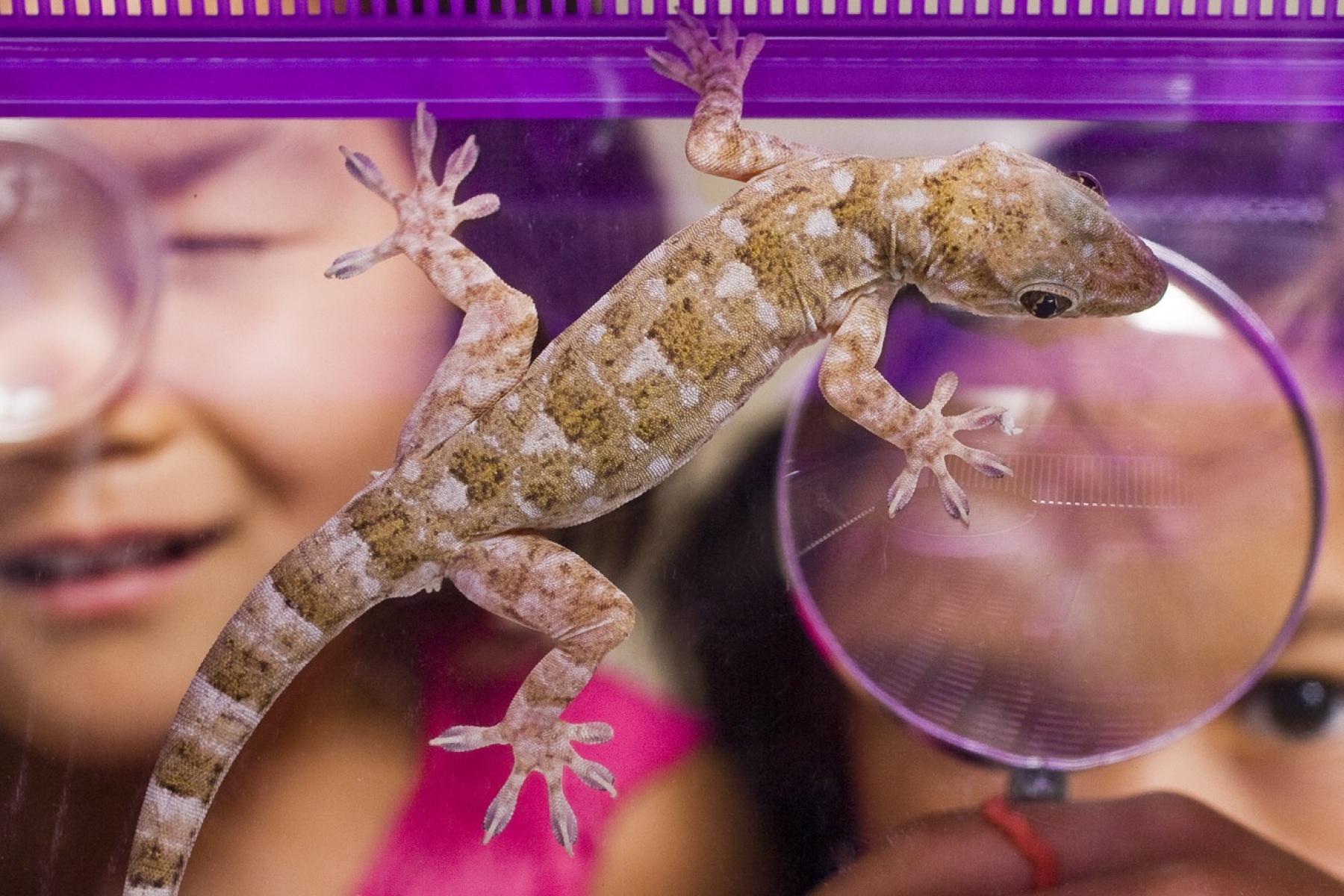DESCRIPTION
Visitors will engage in activities showing various natural phenomena that scientists and engineers have emulated to address human problems. Visitors view peacock feathers at different angles to see iridescence, apply drops of water to observe the color changes, and look at other examples of iridescence in nature, such as a blue Morpho butterfly, tropical beetle wings, and abalone shells. Visitors also explore the Lotus Effect by applying drops of water onto Lotusan paint and stain resistant fabrics, two technologies that mimic the Lotus effect. A flip-book shows examples of iridescence and the Lotus effect, as well as microscopic and scanning electron microscope (SEM) images. Visitors can take home a peacock feather and a TryThis! card describing iridescence and an activity to do at home.
DESCRIPTION
Visitors will engage in activities showing various natural phenomena that scientists and engineers have emulated to address human problems. Visitors view peacock feathers at different angles to see iridescence, apply drops of water to observe the color changes, and look at other examples of iridescence in nature, such as a blue Morpho butterfly, tropical beetle wings, and abalone shells. Visitors also explore the Lotus Effect by applying drops of water onto Lotusan paint and stain resistant fabrics, two technologies that mimic the Lotus effect. A flip-book shows examples of iridescence and the Lotus effect, as well as microscopic and scanning electron microscope (SEM) images. Visitors can take home a peacock feather and a TryThis! card describing iridescence and an activity to do at home.
OBJECTIVES
BIG IDEA
Biomimicry is defined as imitating nature’s best ideas to solve human problems. Many advances in nanotechnology and current research use nature as inspiration.
LEARNING GOALS
1. Understand that biomimicry is imitating nature’s best ideas to solve human problems
2. Understand that nano means really, really small. So small you cannot see it. Things behave differently when they are this small.
3. Understand that nano sized things are in many places, including in nature.
4. Understand that numerous nanotechnologies have been inspired by nature. (biomimicry)
5. Think of other things in nature that we could use as inspiration to solve a human problem.
NANO CONTENT MAP
Nanometer-sized things are very small, and often behave differently than larger things do.
Scientists and engineers have formed the interdisciplinary field of nanotechnology by investigating properties and manipulating matter at the nanoscale.
Nanoscience, nanotechnology, and nanoengineering lead to new knowledge and innovations that weren't possible before.
Credits
University of Wisconsin-Madison, MRSEC
Developed for the NISE Network with funding from the National Science Foundation under Award Numbers 0532536 and 0940143. Any opinions, findings, and conclusions or recommendations expressed in this product are those of the authors and do not necessarily reflect the views of the Foundation.
Creative Commons Attribution Non-Commercial Share Alike 3.0 United States (CC BY-NC-SA 3.0 US).
View more details

NISE Network products are developed through an iterative collaborative process that includes scientific review, peer review, and visitor evaluation in accordance with an inclusive audiences approach. Products are designed to be easily edited and adapted for different audiences under a Creative Commons Attribution Non-Commercial Share Alike license. To learn more, visit our Development Process page.

